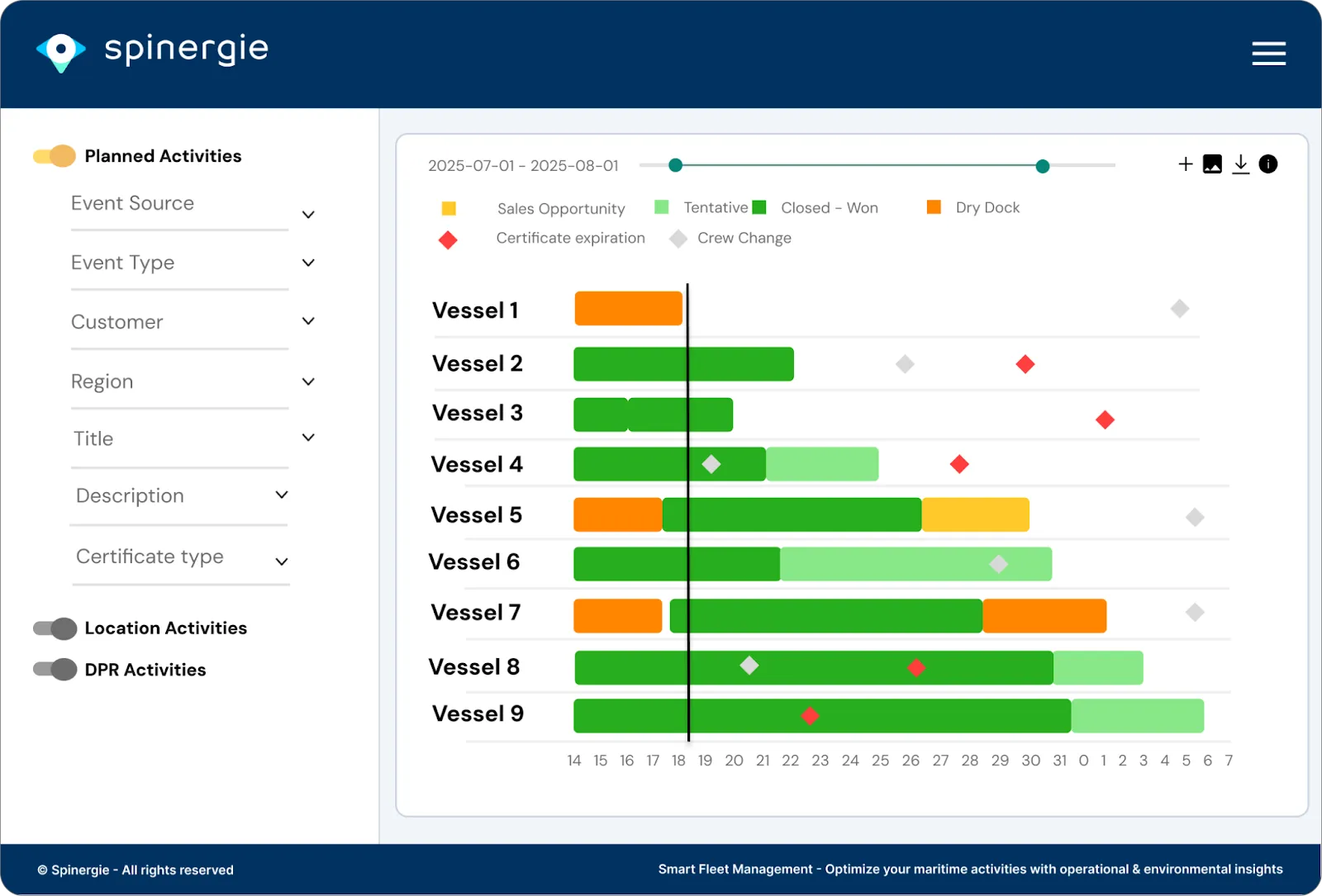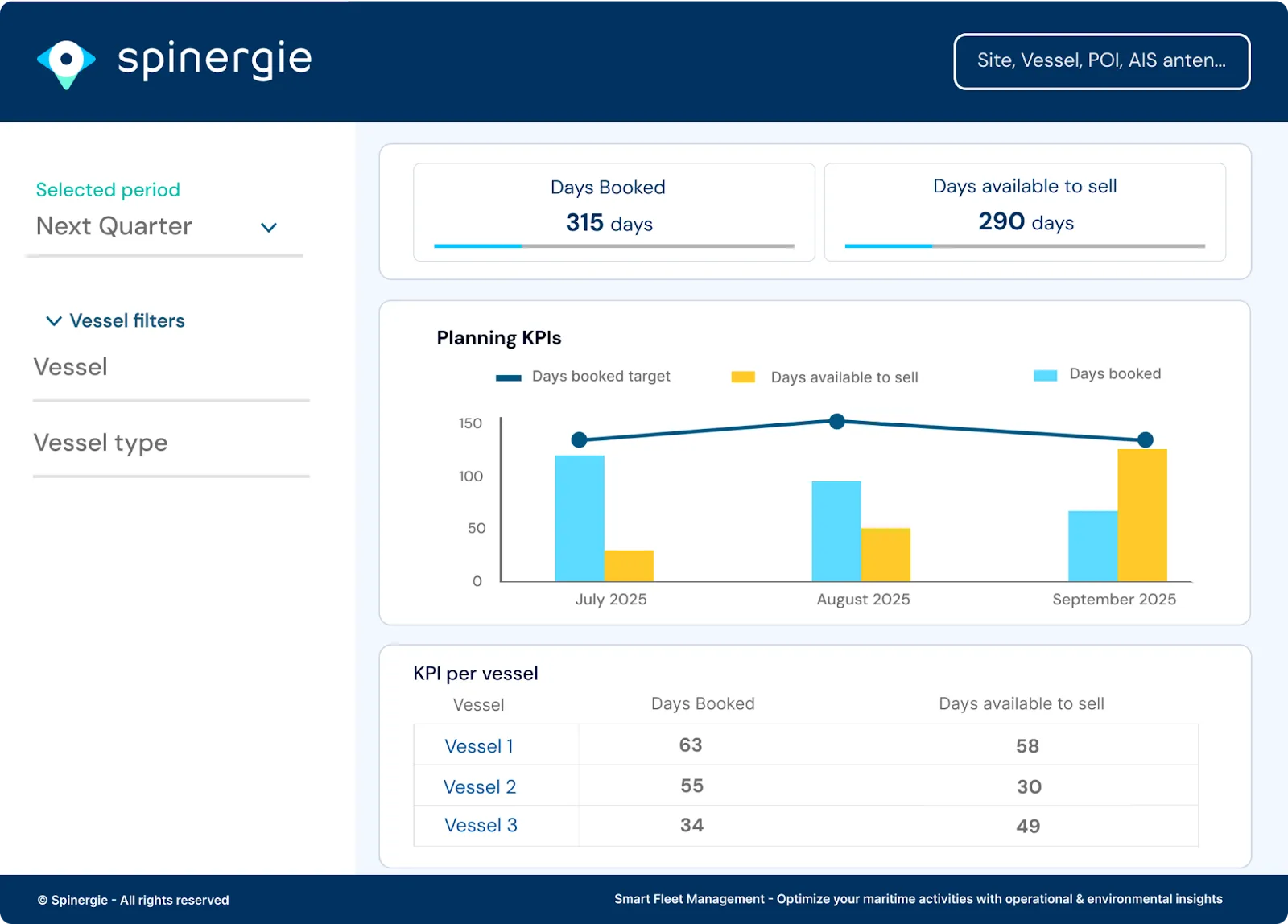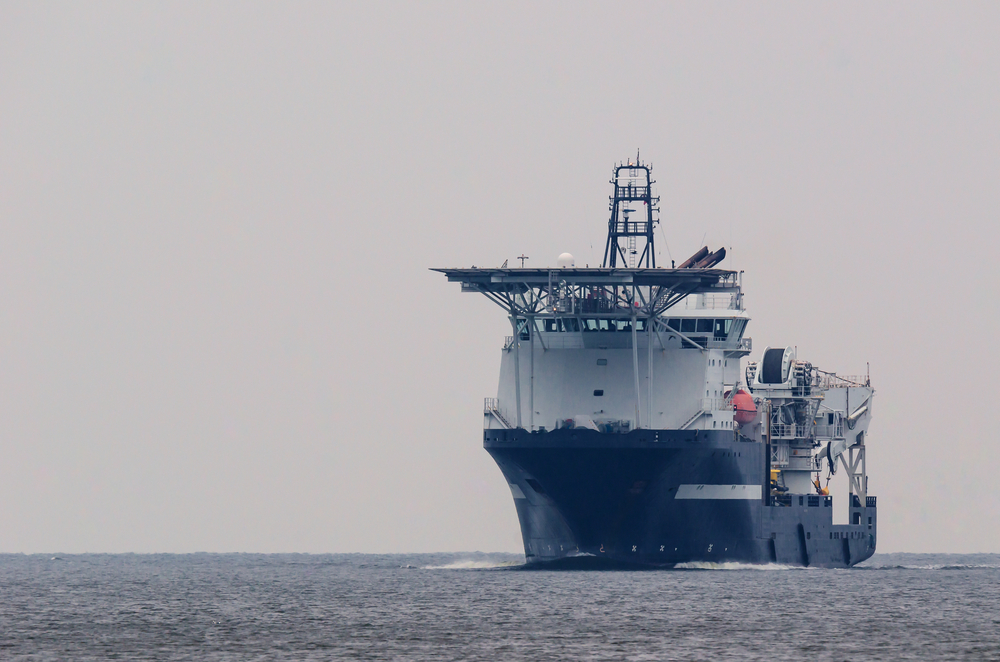Sarah McLean
,
Lead Content Manager
Author
, Published on
September 19, 2025
No items found.

Vessel planning scattered across multiple tools leaves your team open to errors and missed opportunities. Spinergie’s single source solution centralizes all your information to keep you on track and with a competitive edge.

Vessel planning is like playing a high-stakes game of Tetris, only each piece comes from a different team, on a different schedule, and in a different format. Coordinating all of this to ensure optimal fleet productivity is a complex challenge.
Sales, engineering, project management and operations each manage overlapping time-sensitive activities from contracts to tenders to crew changes and audits…the list goes on. Often, this information is spread across a variety of spreadsheets and systems such as CRMs, Planned Maintenance (PMS), class society portals and crewing software.
Such scattered planning information makes it difficult for different departments to collaborate proactively. Even worse, it leads to the schedule being managed in a reactive manner which leads to sub-optimal decisions.
Spinergie’s Vessel Planning module is built to accommodate the needs of the maritime sector and centralizes all your fleet planning activities. This aligns your teams with every decision and maximizes your commercial performance.

The Vessel Planning module helps optimize fleet utilization by:
A vessel manager sought a solution that would help their various teams align their vessel planning needs.
They had previously undertaken commercial planning tasks by manually updating separate vessel spreadsheets with data from their CRM platform alongside other sources. But this manual process siloed their data. This process was error-prone while consolidating vessel schedules was both time-consuming and lacked cross-team functionality.
By choosing to incorporate Spinergie’s Vessel Planning module into their fleet management workflow, the client centralized their planning data. This eliminated the need for multiple spreadsheets and aligned all teams around a live, shared view of their fleet.
A second SFM client, another vessel manager, had recently found themselves with a double booking caused by scattered data. The double booking then resulted in a hastily rearranged drydocking without all required parts being available.
This avoidable disruption highlighted a deeper issue for them.
Vessel Planning centralized all the client’s planning across teams and timelines giving all a shared view of contracts, maintenance, inspections and commercial priorities.
Data can be viewed in three different ways: an easy-to-read timeline for quick access to key information; high-level data within KPI dashboards and granular data within utilization analysis.

Misalignment of vessel availability, maintenance and commercial commitments causes lost opportunities and unexpected costs. However, by centralizing your vessel planning you can achieve better coordination, higher vessel utilization, improved forecasting and greater confidence in your strategic decisions.

Analysis of the subsea vessel fleet including its resurgence of interest and expectations for the future.
.jpg)
Maersk’s Sturgeon WTIV was set to be a pioneering Jones Act-compliant vessel for the US offshore wind market. Yet, with the domestic market faltering under the new administration the project was terminated just before delivery. Is this a sign of the wind market replicating the offshore rig glut of the mid-2010s? Spinergie’s Lead Analyst, Yvan Gelbart, presents his analysis.